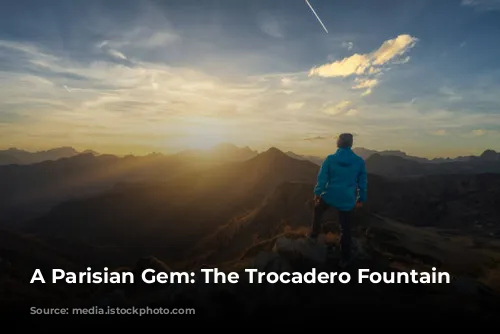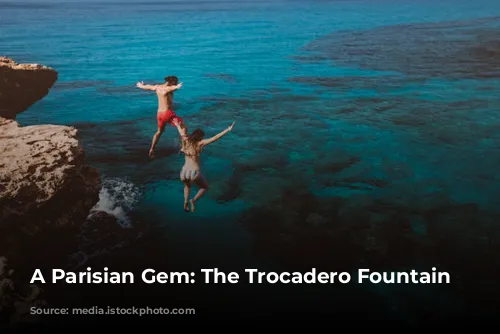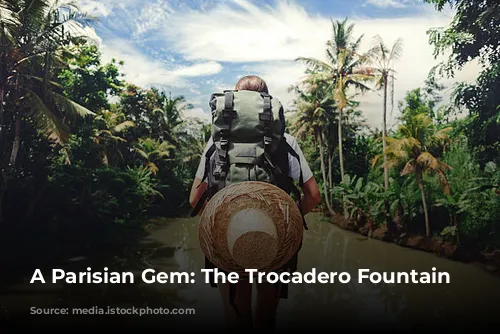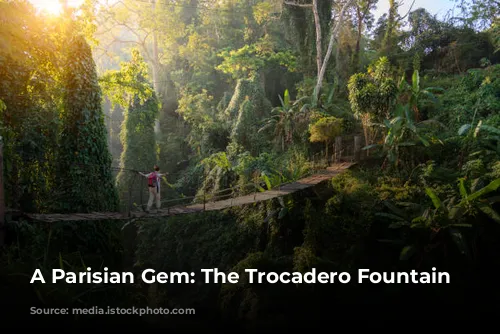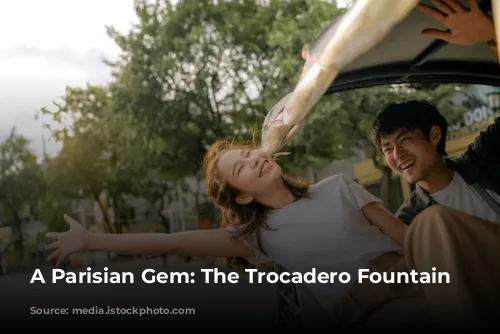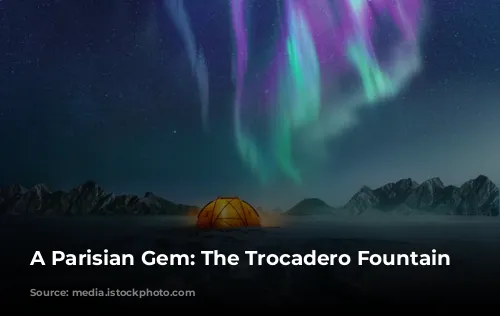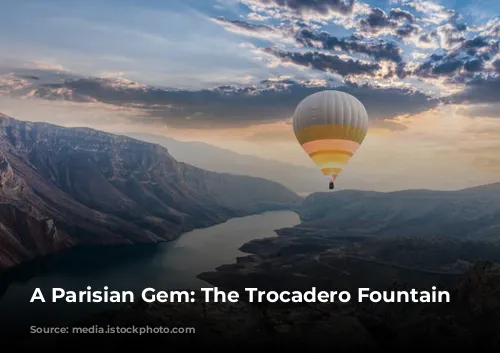The Fountain of Trocadero, more affectionately known as the Warsaw Fountain, is a true Parisian treasure. It’s tucked away in the Trocadero Garden, nestled beneath the majestic Palais de Chaillot in the city’s 16th arrondissement.
This iconic fountain is more than just a splash of water. It’s a testament to Parisian history and artistry, reflecting a fascinating journey through time.
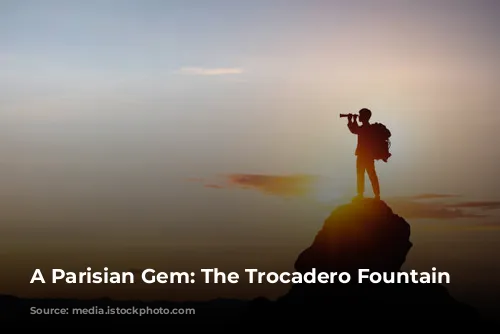
A History in Water: From 1878 to Today
The Trocadero Fountain’s story begins in 1878, with the Paris World Fair. A grand Palais du Trocadero stood proudly, its beauty enhanced by a cascading waterfall fountain designed by the renowned Gabriel Davioud. Four bronze sculptures, each capturing a different animal, adorned this early fountain. Today, three of these sculptures grace the Musée d’Orsay, while the fourth resides in the charming town of Nîmes.
Sadly, the original Palais du Trocadero and its fountain met a tragic fate in 1935. The grand structure was demolished to make way for the modern Palais de Chaillot. Yet, the spirit of art lived on. Auguste Rodin’s iconic bronze mascarons found new homes, with some making their way to the Parc de Sceaux, others gracing the Auteuil greenhouse garden, and two plaster models finding refuge in the Musée des arts décoratifs.

A Modern Masterpiece: The 1937 Fountain
The 1937 World’s Fair marked the birth of the Trocadero Fountain as we know it today. It was a massive undertaking, requiring a complete restructuring of the area and replacing the old Palais du Trocadero with the impressive Palais de Chaillot. This transformation brought about the iconic Trocadero Fountain, designed by the talented architects Roger-Henri Expert, Paul Maître, and Adolphe Thiers, alongside the skilled sculptors Daniel-Joseph Bacqué and Léon-Ernest Drivier.
Imagine a fountain so grand, it earned the title of “the largest fountain in Paris.” It boasts a symphony of water: 20 powerful cannons, 56 graceful sprays, and 12 imposing columns, all powered by pumps capable of generating “the strength of a thousand horses.” The fountain’s grandeur was further enhanced by the magic of 530 electric spotlights, which transformed the fountain into a dazzling spectacle at night during the 1937 World’s Fair.
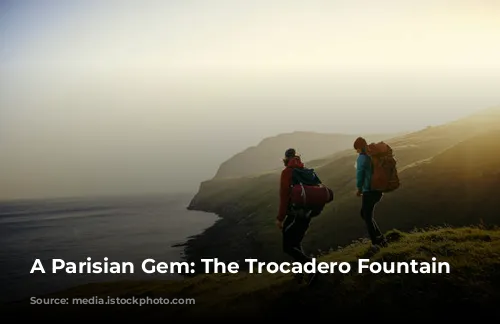
A Fountain for All Seasons
The Trocadero Fountain’s charm extends beyond the summer months. When winter arrives, the frozen surface transforms into a skating rink, inviting Parisians and visitors alike to glide across the ice.
Summer 2021 brought a new twist to this beloved landmark. The Trocadero Gardens were temporarily transformed into a fanzone for the Tokyo Olympic Games, with the fountain serving as a unique, watery stadium.

A Legacy of Art and Water
Today, the Trocadero Fountain stands as a testament to Parisian creativity and innovation. Its rectangular basin, topped by smaller basins, forms a harmonious whole. The 20 powerful cannons continue to project water 50 meters into the air, while the 56 sprays and 12 columns dance with a captivating grace. With an incredible flow rate of 5,700 liters per second, this is a fountain that truly commands attention.
Art is woven into the fountain’s fabric. Léon-Ernest Drivier’s “La Joie de vivre” and Pierre-Marie Poisson’s “La Jeunesse” stand proudly on the Seine side, framing the fountain’s beauty. Georges Guyot’s sculpture of horses and a dog, and Paul Jouve’s depiction of a bull and a deer, add further artistry to the cascading water. Finally, Pierre Traverse’s “The Man” and Daniel Bacqué’s “The Woman” grace the fountain’s edge, their forms forever linked to this iconic Parisian landmark.
The Trocadero Fountain is a testament to Parisian ingenuity and a timeless reminder of the city’s unique beauty. It’s a place where art, history, and water come together in a breathtaking symphony, captivating generations of Parisians and visitors alike.
